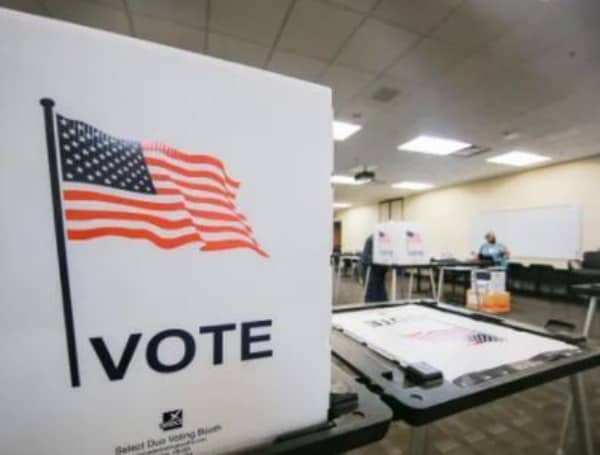By Owen Klinsky, DCNF. Voting Booth, Source: TFP File Photo More than two weeks after Election Day, deep-blue California is still yet to finish co
More than two weeks after Election Day, deep-blue California is still yet to finish counting ballots. The lengthy waiting period is the result of a combination of convoluted policy and a lack of manpower, with staffing shortages, lax mail-in ballot rules and a lengthy window to certify votes all impeding the process, experts told the Daily Caller News Foundation.
The two uncalled races could have significant impacts on the balance of power in the House as the GOP currently has just 219 seats locked up — one more than the 218 needed for a majority — with three of the seats to be left vacant as special elections are conducted to replace Trump cabinet nominees and former Republican Florida Rep. Matt Gaetz.
READ: GOP Lawmakers Push For Investigation Into Massive Federal Funding Funneled To Abortion Clinics
California permits elections to be conducted entirely by mail and sends ballots to all active registered voters. The state then counts all mail-ins that arrive in the seven days following Election Day, so long as they are postmarked on or before 8 p.m. on Nov. 5, effectively delaying the count.
“The all-mail election system inherently slows down the process because of the postmark deadline,” California campaign consultant Nick Dokoozlian told the DCNF. “It accommodates voters in rural areas, but it also delays final counts.”
The 30-day period counties receive to certify results following Election Day is also a major holdup, according to Dokoozlian: “The biggest problem is the 30-day certification period. Each county is just absolutely milking that time.”
A report from non-partisan election database California Target Book found election officials in San Joaquin County, California, counted just 216 provisional ballots between Nov. 15 and Nov. 18. Election staffers also opted not to update the total estimated number of unprocessed ballots, with California campaign finance expert Rob Pyers writing Monday that “it also looks like they [San Joaquin County election officials] had absolutely enough math for one day and just left the total estimated number of unprocessed ballots the same as it was on Friday afternoon.”
Other California counties have moved at an even more glacial pace, with Lake and Mendocino counties having only counted roughly 60% of votes cast, California Target Book told DCNF in a Friday email.
A new California law also gives voters until 5 p.m., Dec. 1, to resolve issues with the ballot signatures, meaning county election officials cannot certify results until at least Dec. 3. Stanislaus County clerk-recorder Donna Linder said she is employing her team for fewer hours per day to reduce overtime costs given she cannot certify the votes until December.
READ: Victor Davis Hanson Warns Dems Still Have A Way To Put Kamala In The White House
The ballot signature legislation follows a 2018 push from the American Civil Liberties Union to loosen signature matching policies based on the claim they disproportionately affect transgender, disabled, female, military, elderly and voters for whom English is a second-language.
Unlike Texas, which saw all 38 of its congressional races called by 2 a.m. on election night, California does not require votes be counted continuously after polls close. The lax staffing rules underlie many of the various other causes for the “perennial delays” in counting by not incentivizing lawmakers to design an efficient election process, Jason Snead, executive director of the Honest Elections Project, told the DCNF.
“People counting votes in California will work an eight hour day and go home instead of just working until they get the job done,” Snead said. “Having a continuous count requirement strongly incentivizes you to develop a system that delivers results as close to election night as possible. People don’t want to be in the trenches for 4, 5, 6 days straight.”
A post-pandemic surge in government staffing shortages and an unwillingness to fork over hefty overtime payments has also obstructed the counting process.
READ: Senator Warns Chinese Hackers “Salt Typhoon” Have Access To All U.S. Mobile Phones
“Since Covid local and county governments are having huge staffing issues,” Dokoozlian told the DCNF. “It started during Covid. People quit, and now the vacancy rates for these positions are through the roof. They’re not something that California local governments are used to. You can go to Stanislaus County right now, and they’re offering a $10,000 bonus for a $70,000-a-year job. We’re seeing 20 to 25% vacancy rates. This is not just Stanislaus County, it’s many of the rest of the counties as well.”
A December 2023 study from University of California Berkeley’s Labor Center reported a statewide government staffing crisis, with vacancies as high as 30% in several counties. Democratic California Gov. Gavin Newsom later pushed to eliminate the openings in a bid to reduce spending by $8.5 billion in the 2024-2025 budget cycle.
Stanislaus County offers a sign-on bonus worth $10,000 over three years for eligible employees hired on or before June 30, 2025, according to The Modesto Bee.
“The proof is in the pudding,” Snead told the DCNF. “The California system is deliberately designed not to produce an efficient election result.”
Please make a small donation to the Tampa Free Press to help sustain independent journalism. Your contribution enables us to continue delivering high-quality, local, and national news coverage.
Android Users: Download our free app to stay up-to-date on the latest news.
Connect with us: Follow the Tampa Free Press on Facebook and Twitter for breaking news and updates.
Sign up: Subscribe to our free newsletter for a curated selection of top stories delivered straight to your inbox.

First published by the Daily Caller News Foundation.

